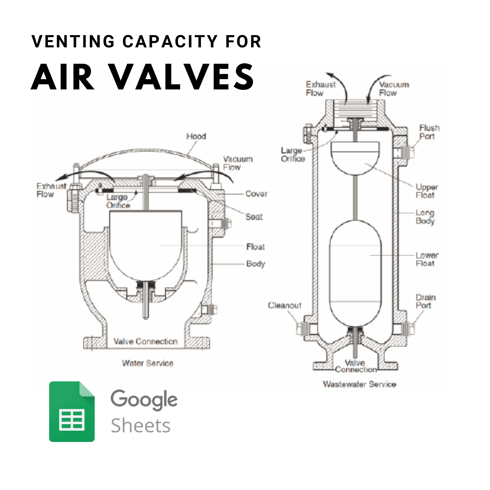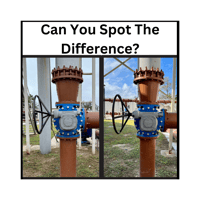Three way plug valves are a great option for diverting or throttling flow to a particular branch...
The Importance of Air Valves
Air valves play a critical role in pump stations and pipelines. They allow the proper flow of water and wastewater; they essentially allow the system to breathe as needed. Most of the time these automatic air valves are releasing air from the system, however during a pump trip event, an air valve can allow air into the pipeline to prevent damage from a vacuum event.
Air in a pressurized pipeline comes from three primary sources. The first one being from start up, the line is not empty, it's full of air. The second being the water itself. Water contains about 2% air by volume. During system operation, entrapped air will go through a cycle and separate out. In a wastewater force main system, the media can contain up to 6% air by volume. The third source of air is that in which it enters through mechanical equipment. This could be from a pump as well as air being drawn in through seals, valves, or under the condition of a vacuum event.
So how does air negatively impact a system? Pockets of air accumulating at high points can result in a restriction which causes increased velocity as well as increased head. This will also increase energy consumption. Air pockets can also promote corrosion of pipe and fittings.

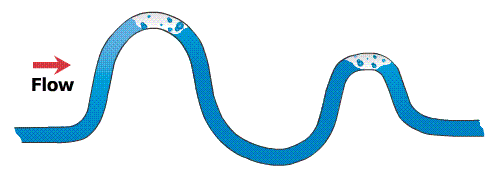
If an air pocket is able to grow large enough, the possibility of total flow stoppage exists. If system dynamics present the perfect storm, the possibility of the slug of air being pushed down the pipeline is real which could lead to a pressure surge or a water hammer event, which could result in dislodged gaskets, premature pipeline wear, or broken pipes.
In the early 1900’s, engineers and waterworks personnel worked together to understand the problems they were facing with air. Today, manual air bleed-off points still exist. Unfortunately, it has proven impossible to predict when it is time to bleed off air. A better solution would be to utilize an automatic air valve.
Automatic air valves are available in three basic configurations: Air Release Valve (small accumulations of air), Air/Vacuum Valve (large volume of air), and Combination Air Valves (both functions combined). Correct sizing and location of all three types of air valves is critical as well as knowing minimum and maximum pressures for the valve's location.
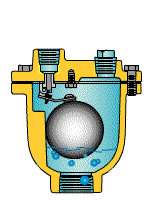
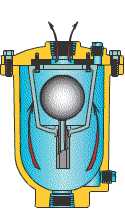
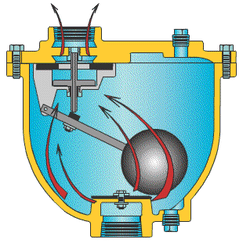
There are other air valve configurations as well which include the Surge-Suppression Air Valve, Well Service Air Valve, and Vacuum Breaker Valves. Air valve standards should conform around AWWA C512 as well as AWWA M51. These air valve standards exist to protect the utility and design engineer with entry level minimums for materials and testing.
Some folks today still use the term air relief when calling out an air valve out on a plan set, which only confuses everyone. If you still use the term air relief, we kindly ask that you omit this from your call outs related to air valves. Another thing that sometimes gets overlooked is air valve pressure ratings. This just doesn't apply to max pressures, but also applies to minimum pressures as well. If we know the application will have low pressure ahead of time, we can accommodate for this, so the right valve ends up in the field, and there are no potential leaking issues.
Not all air valves are the same. Venting capacities can vary from valve manufacturer to valve manufacturer as you can see in the above video. Regarding vacuum capacity, AWWA M51 states a baseline max at sea level is always 14.7 psi, but at 60 degrees and a 5psi max differential. Be aware that there are air valve manufactures providing non-AWWA valves, so they do not meet the M51 performance standards which relate to the required SCFM flow rate, for vacuum sizing as well as exhaust sizing. Pay attention to the inlet and outlet size of an air valve, as this is the first thing that usually gives it away. All isolation valves leading up to the air valve are to be full port also, so they do not de-rate the air valve performance in anyway.


Link to Venting Capacity for air valve Google sheet: https://docs.google.com/spreadsheets/d/1MwU4FXkn7sEBKehF74Wsh5agfBjgkg4VDheF4M14kQQ/view
When it comes to wastewater air valves, these valves are typically taller for many reasons. Wastewater air valve components are designed to minimize fouling of seals and float lock-up. The body material of construction can be ductile iron with a fusion bonded epoxy coating in and out on them. A great valve coatings case study featuring Salt Creek can be found here: https://www.valmatic.com/Portals/0/pdfs/SaltCreekCaseStudy.pdf. 316 stainless steel bodies are also an option. Backwashing accessories are typically called out for for wastewater air valves for maintenance purposes.
Wastewater air valves are often at lower pressures. The need for a zero psi sealing air valve may be required. Note that stating an operating range from 0 - 150, psi does not mean the valve will truly seal gas tight at zero psi.
Your project and reputation deserve adequate air release and air vacuum protection using performance based specifications. Feel free to reach out to Environmental MD for support, as we are happy to assist you or point you in the right direction.


